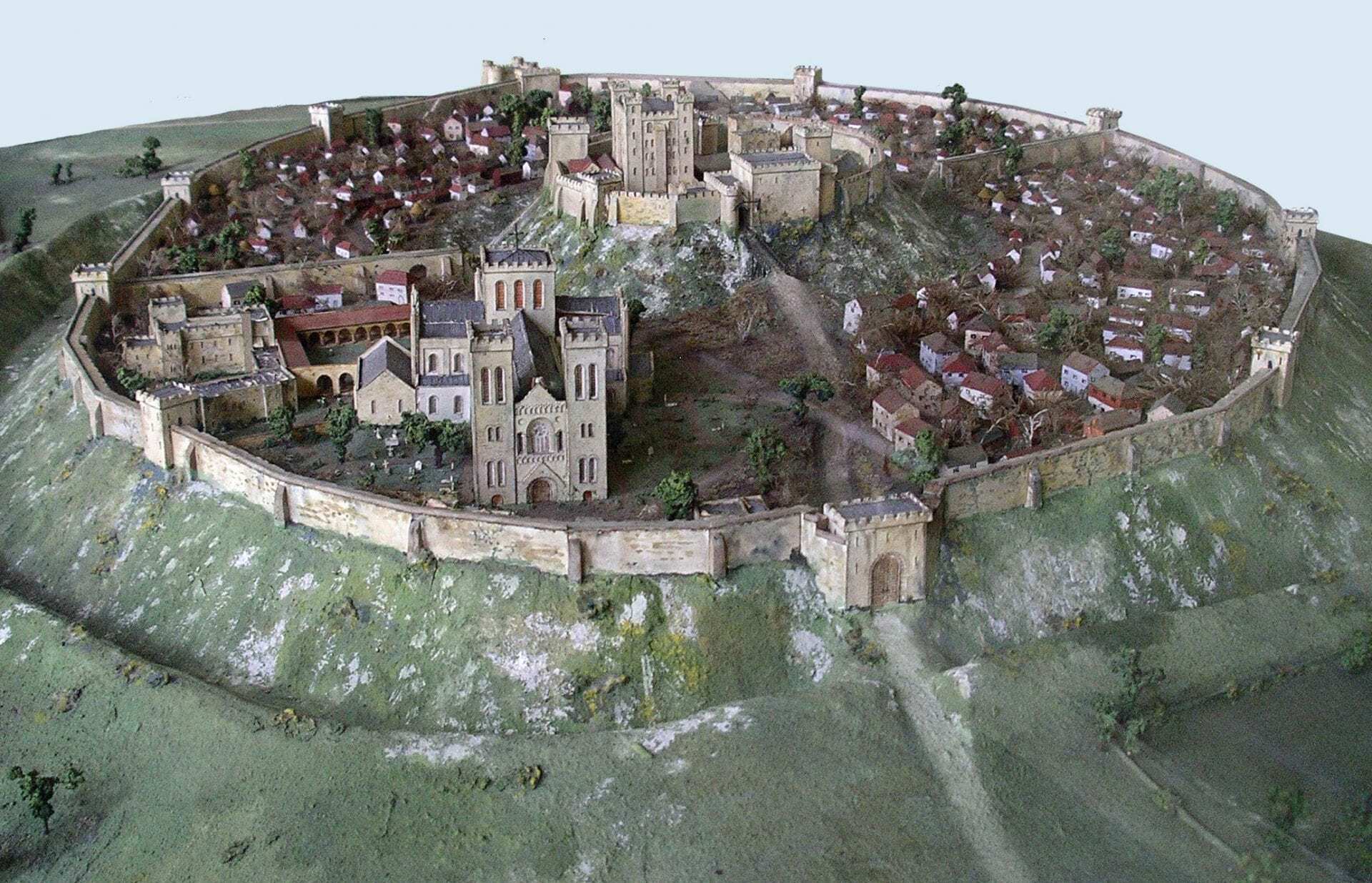Old Sarum is a large multi-period archaeological site located on a westward-facing chalk spur overlooking the River Avon, north of the modern-day city of Salisbury, England.
The earliest occupation dates from the Neolithic period, where scattered evidence of a farming community has been found dating from around 3000 BC. During the Iron Age, the first major settlement was established around 400 BC with the construction of a large oval-shaped univallate enclosure, which later developed into a bivallate earthwork fortification.
After the Roman conquest starting in AD 43, two sizeable Romano-British settlements were established outside the fort’s ramparts with the suggestion that the hillfort may have become a military garrison making use of the existing defences.
Old Sarum has been associated with the Roman settlement of Sorviodunum, located near the intersection of four converging roads, as mentioned twice in the Iter Britanniarum of the Antonine Itineraries (An ancient ‘road map’ of Roman Britain).

By the Saxon period, Old Sarum was known as Searobyrig, where it was recorded in the Anglo-Saxon Chronicles that King Cynric (King of Wessex) won a battle against the Britons around AD 554. After being absorbed into the Kingdom of Wessex, Old Sarum was relatively abandoned until the Viking invasions posed a clear threat to the frontiers of Wessex.
Although not one of Wiltshire’s four ‘burhs’, King Alfred of Wessex was said to have issued an urgent order on the subject Leofric, Earl of Wiltunscire to further fortify Old Sarum.
After the Norman conquest of England by William the Conqueror, a motte-and-bailey castle was built in AD 1070. The castle was a royal fortress held by the King and trusted to his castellan, the Sheriff of Wiltshire to manage the regional interests of the crown.
The Domesday Book was probably presented to William I at Old Sarum in AD 1086, the same year he convened the prelates, nobles, sheriffs, and knights of his dominions there to pay him homage by the Oath of Salisbury.

Two further national gatherings were held at Old Sarum, one by William Rufus or William II, the third son of William the Conqueror in AD 1096 and another by King Henry I in AD 1116.
Owing to the newfound status of Old Sarum as a major commercial city, a cathedral was commissioned for the new Salisbury Diocese and the newly appointed Bishop of Salisbury within the town walls and completed in AD 1092.
The city’s status would be elevated further with the construction of a royal palace by Bishop Roger, the seventh Lord Chancellor and Lord Keeper of England. Bishop Roger began work on the palace during the 1130s and had gained several castles outside his dioceses that led to a confrontation with King Stephen. Stephen found a pretext for demanding a surrender of the castles, and on Bishop Roger’s refusal he was arrested, and the lands and castles acquired were sequestrated by the crown leaving the castle at Old Sarum to fall into disrepair.
By the late 12th century, Canon Peter of Bloid described Old Sarum as “barren, dry, and solitary, exposed to the rage of the wind” and the cathedral “as a captive on the hill where it was built, like the ark of God shut up in the profane house of Baal.”
The situation at Old Sarum reached the doors of the Pope, where Pope Honorius III issued an indulgence in AD 1218 to relate the cathedral. A new settlement was established in a more favourable location called New Sarum, later New Salisbury, and eventually just Salisbury several miles further south on the banks of the River Avon.
Old Sarum was harvested for stone and materials to build the new settlement and the former cathedral was dissolved in AD 1226. By the 14th century, Old Sarum had become virtually abandoned and in AD 1333, King Edward II ordered for the demolition of the castle and fortifications.
Despite now being a defunct city, “the borough of Old Sarum” was still sending “elected” members to the house of commons despite having virtually no voters, essentially becoming a rotten borough. The most notable member of parliament being William Pitt the Elder who served as Prime Minister of Great Britain in the middle of the 18th century. In the 1832 reform act, Old Sarum’s status and voting privileges were subsumed and absorbed into the borough of Wilton.
Header Image Credit : Model: John B. Thorp. Photo: Kurt Kastner





